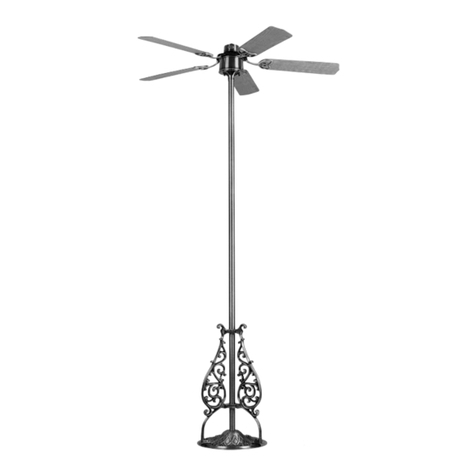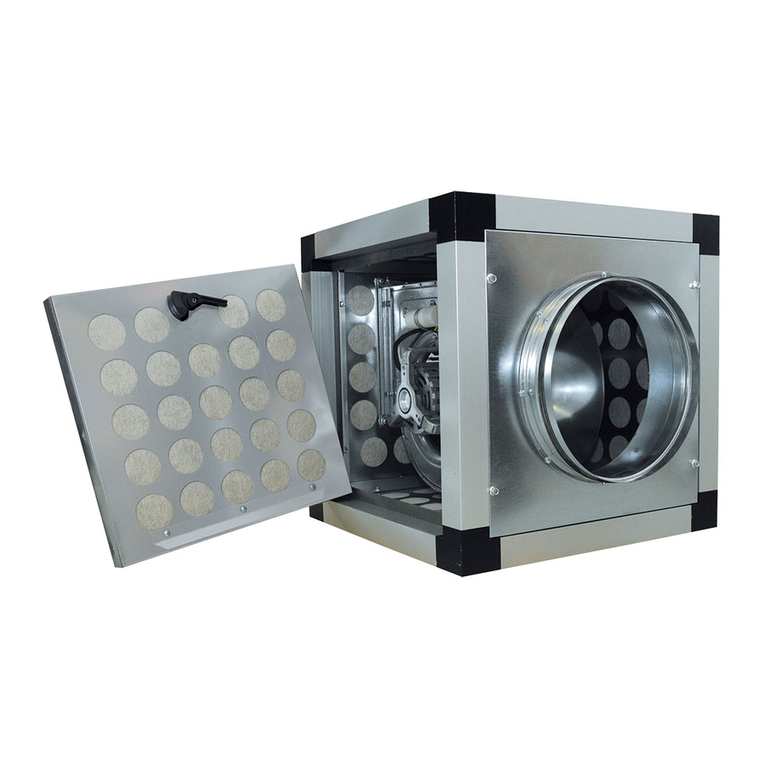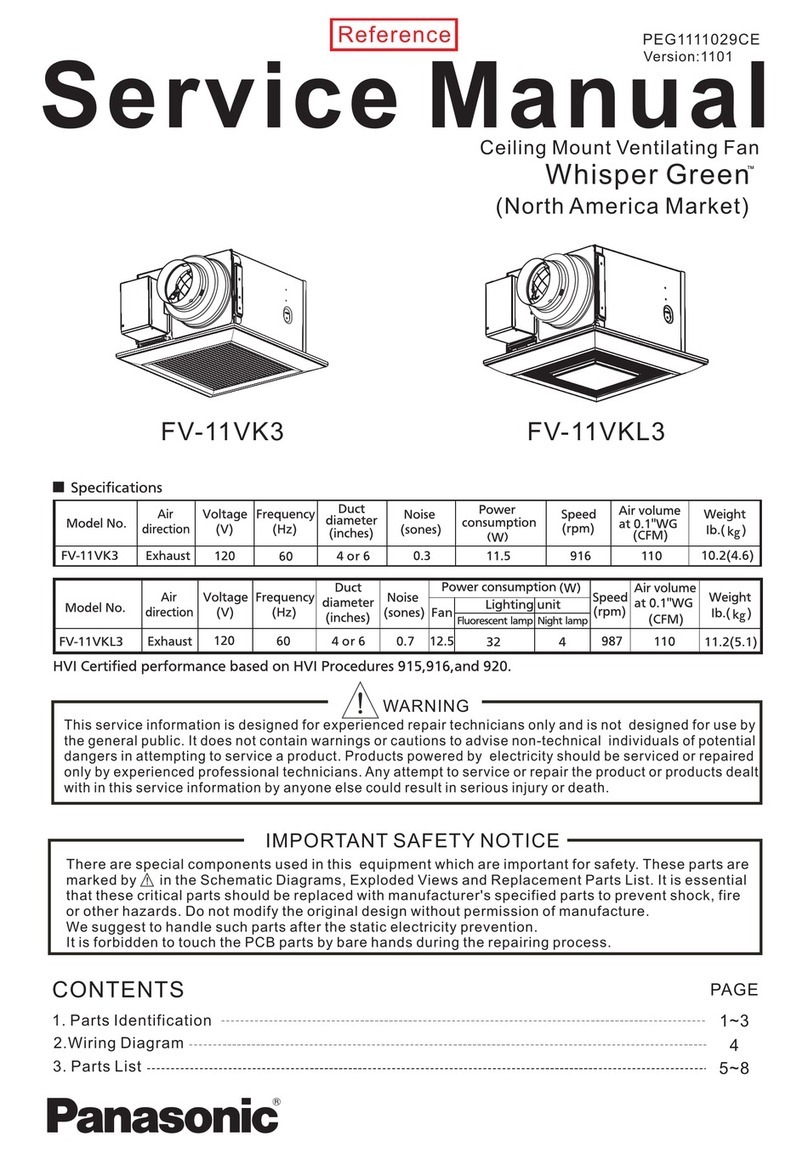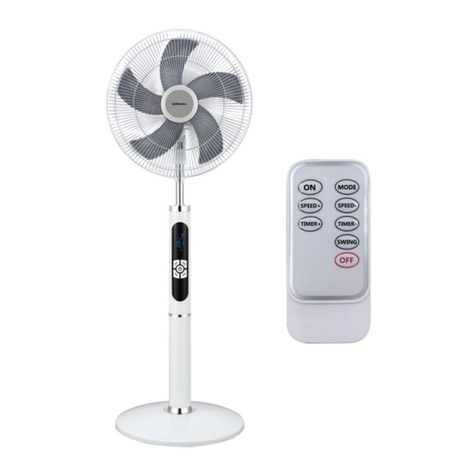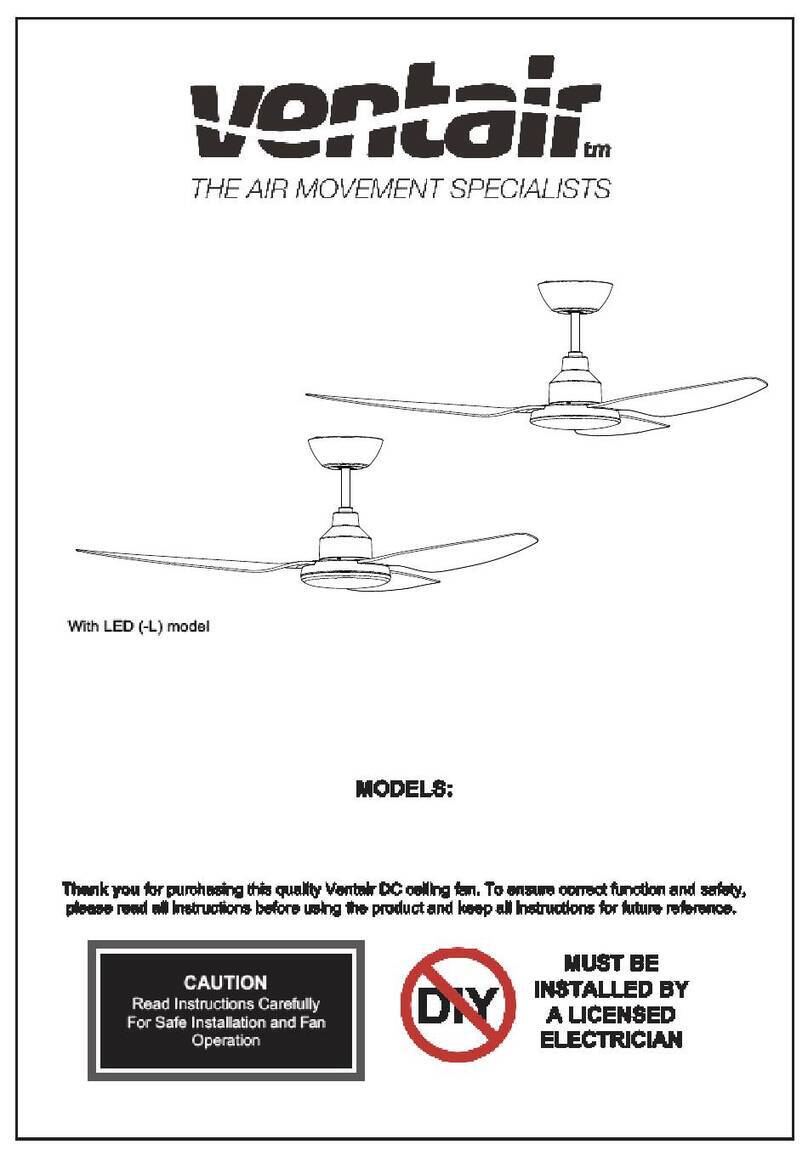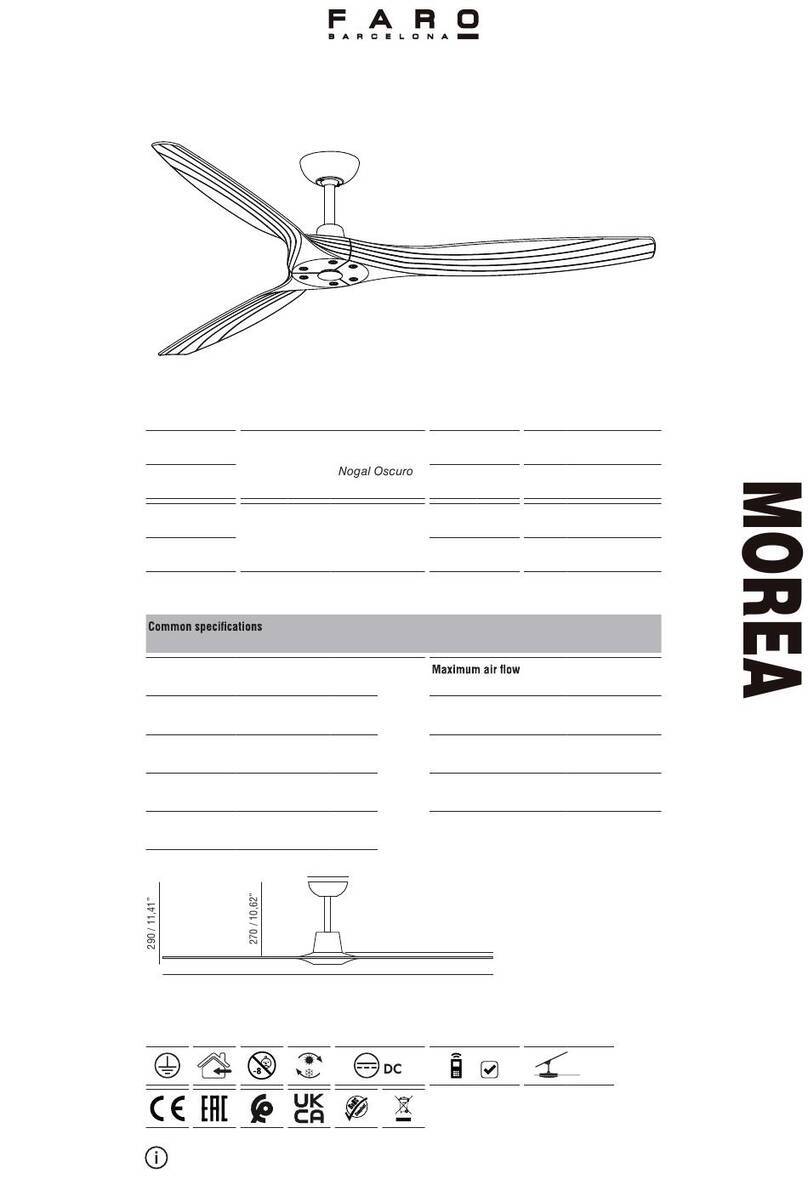BIO-MED DEVICES IC-2A User manual

BIO-MED DEVICES
IC-2A ADULT
INTENSIVE CARE VENTILATOR
INSTRUCTION MANUAL
CATALOG #8050A
PRICE $25.00
REV 122606
BIO-MED DEVICES, INC.
61 SOUNDVIEW ROAD, GUILFORD, CT 06437
(203) 458-0202 Fax (203) 458-0440
www.biomeddevices.com

TABLE OF CONTENTS
ADDENDUMS ................................................................................................................1
MAGNETIC RESONANCE IMAGING ENVIRONMENT .............................................1
SYMBOL EXPLANATION...........................................................................................1
IC-2A WITH TOP MOUNTED BLENDER...................................................................2
BLENDER SETUP INSTRUCTIONS WITH HEAVY DUTY STAND...........................3
UNPACKING..................................................................................................................6
WARRANTY...................................................................................................................8
WARNINGS ...................................................................................................................9
CAUTIONS.....................................................................................................................9
I. GENERAL................................................................................................................11
A. INTENDED USE .................................................................................................11
B. MODES OF OPERATION ...................................................................................11
C. FEATURES.........................................................................................................11
D. PERFORMANCE CHARACTERISTICS .............................................................11
II. DESCRIPTION........................................................................................................13
A. PRINCIPLES OF OPERATION...........................................................................13
B. CONTROLS, INDICATORS AND CONNECTIONS ............................................15
C. SPECIFICATIONS ..............................................................................................17
III. INSTALLATION CONSIDERATIONS....................................................................18
A. EQUIPMENT REQUIRED ...................................................................................18
B. SUPPLY GAS .....................................................................................................18
C. MOUNTING BRACKET.......................................................................................18
D. ANCILLARY EQUIPMENT..................................................................................18
IV. SET UP..................................................................................................................20
A. CONNECTION OF GAS SUPPLY ......................................................................20
B. CONNECTION OF PATIENT CIRCUIT ..............................................................20
V. SELECTION OF VENTILATION PARAMETERS AND ADJUSTMENT OF
CONTROLS .................................................................................................................21
A. INTERMITTENT POSITIVE PRESSURE VENTILATION (IPPV) WITH OR
WITHOUT PEEP ......................................................................................................21
B. SYNCHRONIZED INTERMITTENT MANDATORY VENTILATION (SIMV)........22
C. CONTINUOUS POSITIVE AIRWAY PRESSURE (CPAP) .................................23
D. MANUAL CYCLING ............................................................................................24
VI. PRECAUTIONS.....................................................................................................25
VII. MAINTENANCE....................................................................................................27
A. NORMAL CARE..................................................................................................27
B. CHECKOUT PROCEDURE ................................................................................27
C. CALIBRATION ....................................................................................................30
D. IF SERVICE IS REQUIRED................................................................................30
TABLE I .......................................................................................................................31
RATE & I/E RATIO ...................................................................................................31
TABLE II ......................................................................................................................32
TIDAL VOLUME .......................................................................................................32
APPENDIX A ...............................................................................................................33
EUROPEAN AGENT ................................................................................................33
APPENDIX B ...............................................................................................................34
MRI TEST.................................................................................................................34

1
ADDENDUMS
MAGNETIC RESONANCE IMAGING ENVIRONMENT
WARNING: ONLY AN IC-2A ORIGINALLY MANUFACTURED BY BIO-MED DEVICES
FOR MRI USE OR RECEIVING AN MRI CONVERSION BY BIO-MED DEVICES IS TO BE
USED IN AN MRI ENVIRONMENT. THESE UNITS WILL BE DESIGNATED BY AN MRI
LABEL AND AN “M” AS A SUFFIX TO THE SERIAL NUMBER.
WHEN USING THE IC-2A/MRI VENTILATOR IN AN MRI ENVIRONMENT, THE
FOLLOWING PRECAUTIONS MUST BE TAKEN:
• THE VENTILATOR MUST NOT BE PLACED INSIDE THE MRI BORE (SEE
APPENDIX B).
• DO NOT USE ANY ACCESSORIES, INCLUDING OXYGEN AND AIR CYLINDERS,
REGULATORS, MOUNTING BRACKETS AND SUPPORT STANDS, THAT ARE
MADE OF ANY METAL THAT COULD BE ATTRACTED BY A MAGNET.
SYMBOL EXPLANATION
Attention, See Instructions for Use
Date of Manufacture
SN Serial Number
REF Catalog Number
The CE mark displayed on this product signifies that this device is in compliance
with the European Medical Devices Directive (Council Directive 93/42/EEC). As a
prerequisite for the CE mark, Bio-Med Devices operates under an ISO 13485
compliant quality system (covering the design and manufacture of medical
devices). The four-digit code underlying the CE mark (0086) pertains to Bio-
Med's Notified Body, the British Standards Institute, whose function is to
investigate and attest to the validity of CE-mark claims.

2
IC-2A WITH TOP MOUNTED BLENDER
The following instructions explain how to make the connections between your IC-2A
and blender using the Bio-Med Blender Hose Kit, catalog #2005IC.
1. Mount the blender to the IC-2A using the
nut to nut coupler (D) – (blender primary outlet
to IC-2A patient supply).
2. Connect the air supply hose (1011) to the
air supply fitting on the blender.
3. Connect the elbow fitting (B) to the leg of
the high pressure wye (A) and the other side of
the elbow to the logic supply fitting on the IC-
2A.
4. Using the coupler (C), connect the other leg
of the high pressure wye to the O2supply fitting
on the blender.
5. Connect the O2supply hose (1010) to the
wye.

3
BLENDER SETUP INSTRUCTIONS WITH HEAVY DUTY STAND
Setup instructions for the IC-2A and optional blender using hose kit #2005ICHC
This hose kit is intended for use when cylinders are used with the IC-2A complete
package, Catalog #8001AMBC.
Prior to mounting the pole to the base, slip the cylinder brackets over the end of the pole.
Put the open bracket on first and then the one with the bars across the rings. The bars
should be down (closest to the end of the pole). Install the pole to the base. Secure the
pole to the base with the washer and nut.
Mount the blender bracket (pins down) approximately 12" from the top of the pole.
Place the blender in the bracket.
Place the IC-2A in the top tilt bracket.
Install the oxygen cylinder with regulator in the cylinder bracket to the right and with the
supply output fitting facing forward. If using Bio-Med's Deluxe Regulator, then the 50 PSI
Out fitting should face forward.
Install the air cylinder with regulator in the cylinder bracket to the left and with the supply
output fitting facing to the rear. If using Bio-Med's Deluxe Regulator, then the 50 psi out
fitting should face forward.
Use the elbows (3) in the following locations. Face the threads as indicated:
Logic supply input on the IC-2A- face threads to the rear
Patient supply input on the IC-2A- face threads to the rear
Blender output- face threads to outside of blender air fitting
The high pressure wye is to be used to split your oxygen source before the blender so the
short leg goes to the blender input and the long leg goes to the IC-2A logic input. Connect
one end of a 2' oxygen supply hose to the input of this wye and the other end to the output
fitting on the oxygen cylinder regulator.
Connect one end of the 2' air supply hose to the output fitting on the air cylinder regulator
and the other end to the blender air input.
Connect the remaining 2' supply hose from the elbow on the blender output to the IC-2A
patient supply input.
If using Bio-Med's Deluxe Regulators, use the 10' air & oxygen hoses and connect the 50
PSI Input fittings to corresponding wall sources, if desired.

4
Setup instructions for the IC-2A and optional blender using hose kit #2005ICH
This hose kit is intended for use when cylinders are NOT used.
Mount the blender bracket (pins down) approximately 12" from the top of the pole.
Place the blender in the bracket.
Place the IC-2A in the top tilt bracket.
Use the elbows (3) in the following locations. Face the threads to the rear.
Logic supply input on the IC-2A.
Patient supply input on the IC-2A.
Blender output.
The enclosed high pressure wye is to be used to split the oxygen source before the blender
so one leg goes to the blender input and the other to the IC-2A logic input.
Connect the 10' oxygen supply hose to the input of the wye.
Connect the short hose leg of the wye to the blender oxygen input .
Connect the long hose leg of the wye to the elbow on the IC-2A logic supply input.
Connect the 10' air supply hose to the blender air input.
Connect one end of the 2' supply hose to the elbow on the blender output and the other
end to the elbow on the IC-2A patient supply input.

5

6
UNPACKING
When received, the instrument should be immediately unpacked and checked to see that
all component parts have been received, and that there is no apparent damage.
If the IC-2A was shipped directly to you and damage due to shipment is found, notify the
carrier at once. Only you, the consignee, can make a claim against the carrier for damage
in shipment.
If you received the equipment from a BMD dealer, return it to the dealer for adjustment.
In addition to the ventilator, the following items are shipped standard as part of the IC-2A
equipment. Check to assure that all items have been received.
For IC-2A, Catalog #8001A or 8001AM
QTY CAT. #
DESCRIPTION
1
CCAP005
CAP ON IC-2A PATIENT OUTLET
1 2013 MOUNTING BRACKET
1 8005 HIGH PRESSURE WYE
2
PFIT143
SUPPLY ELBOW ADAPTERS
1 1010 10’ HIGH PRESSURE O2SUPPLY HOSE
1
1020
ADULT TEST LUNG
2
8002A
DISPOSABLE PATIENT CIRCUIT
1
8050A
IC-2A INSTRUCTION MANUAL
1
------
WARRANTY CARD
For IC-2A Complete Package, Catalog #8001AMBC
QTY CAT. #
DESCRIPTION
1
8001AM
IC-2A MRI VENTILATOR
1
CCAP005
CLEAR CAP ON IC-2A PATIENT OUTLET
1
2001M
HIGH/LOW FLOW MRI BLENDER
1
1060-5HM
5-LEGGED HEAVY DUTY MRI STAND
1
PFIT143
SUPPLY ELBOW ADAPTERS
1
1020
ADULT TEST LUNG
2
8002A
DISPOSABLE PATIENT CIRCUIT
1
8050A
IC-2A INSTRUCTION MANUAL
1
2120
BLENDER INSTRUCTION MANUAL
1
1005M
MRI DELUXE REGULATOR FOR O2E-CYLINDER
1
1006M
MRI DELUXE REGULATOR FOR AIR E-CYLINDER
1
1061M
E-CYLINDER BRACKET SET FOR HEAVY DUTY STAND

7
2
MLAB024
WARRANTY CARD
1
2005ICHC
HOSE KIT FOR 8001AMBC (see below)
2005ICHC HOSE KIT INCLUDES THE FOLLOWING:
QTY CAT. #
DESCRIPTION
2
PFIT143
SUPPLY ELBOW ADAPTERS
1
8005BH
HIGH PRESSURE WYE FOR BLENDER ON STAND
2
1010-2
2' OXYGEN SUPPLY HOSE
1 1010 10’ OXYGEN SUPPLY HOSE
1 1011-2 2’ AIR SUPPLY HOSE
1
1011
10’ AIR SUPPLY HOSE
1
2013BH
BLENDER BRACKET FOR HEAVY DUTY STAND

8
WARRANTY
The IC-2A Ventilator is warranted to be free from defects in workmanship and material for
one (1) year from the date of purchase. To insure its performance is maintained, any repair
during this warranty period must be performed by BMD.
The warranty does not apply to the patient circuit and hoses supplied with the instrument.
Nor does the warranty cover abuse or misuse of the instrument, or damage due to
unauthorized servicing.
If service is required, the instrument must be properly packed and shipped pre-paid,
directly or through your dealer, to:
BIO-MED DEVICES, INC.
61 SOUNDVIEW ROAD
GUILFORD, CT 06437
(203) 458-0202
An explanation of the problem should accompany the equipment. Please include your
name and telephone number with the paperwork.
There is no oral or implied warranty of the instrument's fitness for a particular purpose
other than its intended use.

9
WARNINGS
Clean, dry, regulated gas supplies at 50 ±5 psi (345 ±34.5 kPa) must be used at all times
or malfunction may result. Note carefully that the logic gas supply should be 100% oxygen
at all times to give the greatest accuracy of the control settings and to assure the most
trouble-free operation. The supply connected to the patient supply connector may be
either: 100% oxygen, air from a dry gas medical air compressor system or a blended
mixture of air and oxygen.
A TWO-WAY SAFETY RELIEF VALVE is installed internally. This valve opens when
pressure in the hose delivering gas to the patient rises above 120 cmH2O ±10 cmH2O or
falls below -4 cmH2O. Its purpose is to limit maximum circuit pressure and to allow patient
inspiration in the unlikely event of failure of the gas supply. It must be maintained and its
screen side clear and unobstructed. It is meant to allow spontaneous breathing for a short
time only until the operator can respond to the disconnect alarm and rectify the supply
malfunction. In such a situation, its use in a contaminated environment could be
hazardous.
Do not re-use disposable breathing circuits.
Do not use in a MRI room unless the IC-2A has been built by Bio-Med Devices for such an
environment. This will be indicated by a MRI plaque on the top of the unit and a “M” at the
end of the serial NUMBER.
If the ventilator is to be used unattended or without remote monitoring, a high/low pressure
alarm must be used at all times with the user within visual and/or audible range of this
alarm. Recommended monitors for this purpose are Bio-Med Devices’ M-1 or M-10.
Any HUMIDIFIER used with the IC-2A must be a "flow-through" type having a low pressure
drop. Use of a humidifier with a "bubbler" tube or pressure jet will render the SAFETY
RELIEF VALVE ineffective.
CAUTIONS
The IC-2A ventilator is intended for use by qualified clinical personnel only. This instruction
manual should be read in its entirety before using the equipment.
Always test the IC-2A each time before connecting to the patient.
As noted later in the text of this manual, the IC-2A time cycle settings are affected by large
changes in barometric pressure, flow rates, and gas composition. They are repeatable,
however, within 5% under constant conditions. As with any ventilator, periodic blood gas
studies should be made to insure proper levels of ventilation.
A one-way valve is installed internally in the patient manifold. This valve opens when
pressure in the hose delivering gas to the patient falls below -4 cm h2o. Its purpose is to
allow patient inspiration in the event of gas supply failure. It is meant to allow spontaneous
breathing for a short time only until the operator can respond to the disconnect alarm and
rectify the supply malfunction.
A patient filter should always be used with the IC-2A to prevent cross contamination and
protect the patient.

10
Always turn on the IC-2A before attaching to patient to avoid erroneous breaths.
Whenever the IC-2A is turned off, disconnect the patient before turning the ventilator
back on in order to avoid erroneous breaths.
Antistatic or electrically conductive hoses or tubing should not be used.

11
I. GENERAL
A. INTENDED USE
The Model IC-2A Ventilator is for respiratory support of adult patients both in
hospital and during transport. It may be used either volume or pressure limited and
with a wide range or I\E ratios less than or greater that 1:1.
WARNING: Do not use in a MRI room unless the IC-2A has been built by Bio-Med
Devices for such an environment. This will be indicated by a MRI plaque on the top
of the unit and a “M” at the end of the serial NUMBER.
B. MODES OF OPERATION
It is a pulsatile flow Ventilator which may be used in any of the following operating
modes:
• Time cycled, either volume or pressure limited, with or without
Positive End Expiratory Pressure (PEEP).
• Intermittent Positive Pressure Ventilation (IPPV)
• Synchronized Intermittent Mandatory Ventilation (SIMV)
• Continuous Positive Airway Pressure (CPAP).
• Manual
C. FEATURES
Portable: Compact and light weight. May be hand carried or attached to stand;
used without interruption during transportation; compatible with masks,
endotracheal tubes and tracheostomy tubes.
Gas Powered: Portable pressurized tank or wall outlet, providing 50 psi oxygen or
air.
Operable in Hazardous Areas: Non-electric, no shock hazard, case constantly self-
purged.
High Reliability: Controlled by miniature pneumatic logic elements; with negligible
frictional wear.
Very low compliance.
Readily usable with standard accessories: humidifier, oxygen blender, oxygen
analyzer, pressure alarms, and patient circuit.
D. PERFORMANCE CHARACTERISTICS
Direct control is provided for inspiratory and expiratory times, flow rate, and
maximum pressure and PEEP or CPAP levels within the patient circuit.

12
Oxygen concentration: variable, 21% to 100% with external blender.
Respiratory rate: variable, 11/3to 66 breaths/min.
Tidal volume: variable, 0 to over 3000 ml.
I/E ratio: variable.
Respiratory and I/E ratio are determined by INSP. TIME and EXP. TIME control
settings. These settings are repeatable within 5%.1For greater accuracy of
settings and external monitoring device may be used.
Oxygen concentration is varied by the use of an external accessory blender or
premixed gas supply. Care should be taken to select a blender capable of
maintaining constant supply pressure over the full range of flow rates that the IC-2A
provides. As with all ventilation systems, the O2concentration should be tested
periodically with an oxygen analyzer.
The tidal volume, when the ventilator is operated in a volume limited mode, is the
product of flow rate (converted to ml/sec) and inspiratory time:
TIDAL VOLUME (ml) = FLOW RATE (ml/sec) X INSPIRATORY TIME (sec)
NOTE: Flow rate is not Minute Volume
MINUTE VOLUME = TIDAL VOLUME X RESPIRATORY RATE
It should be noted that the MAX PRESSURE and PEEP/CPAP control settings are
affected slightly by flow. When flow is increased, the pressure levels set by these
controls will increase somewhat. These changes may be noted on the pressure
gauge and the settings readjusted.
1 At elevations above sea level, the intervals set by the INSP. TIME and EXP. TIME controls are
increased due to lower barometric pressure. The difference is about 2.5% per 1000' of elevation. With
an air supply connected to the POWER OXYGEN inlet fitting, the time intervals are about 10% less than
with pure oxygen connected.

13
II. DESCRIPTION
A. PRINCIPLES OF OPERATION
1. IPPV
With the CYCLE/CPAP-MANUAL selector set in cycle and NORMAL/SIMV
selector set in normal, the IC-2A acts as a controller or assist/controller. A
pilot valve operated by the timing signal from the fluid logic opens for a
preset length of time (Insp. Time) allowing gas to flow at some rate
established by the flow rate control. During this time the exhalation valve is
pressurized, closing the exhalation port and thus insuring that all gas is
directed to the patient. The gas supply is a high pressure source and since
the pressure reached in the patient is relatively low, the flow rate remains
constant, independent of changes in patient pressure. The ventilator is a
constant flow generator.
a. Volume Limited
The pressure developed in the system depends on the total
compliance and the volume of gas delivered. If the adjustable
pressure limit is set higher than the pressure that is reached, then no
gas is dumped to atmosphere and the ventilator is volume limited. In
this mode the tidal volume (Vt) is the product of inspiratory time and
flow rate.
Vt= TlX Vl
In this mode the pressure limit is normally set 5-10 cmH2O above the
pressure attained. It then acts as an upper level failsafe. If patient
resistance or compliance cause a significant increase in pressure, the
pressure will be limited at the preset level. When this occurs the
ventilator is no longer volume limited since some gas is dumped to
atmosphere and therefore the tidal volume is unknown.
b. Pressure Limited
Whenever the pressure reached within the patient circuit is equal to
the maximum pressure limit established using the maximum pressure
control on the rear panel, the excess gas is dumped to atmosphere
and the unit is operating in a pressure-limited mode. The ventilator
may be used continuously in the pressure limited mode by setting the
maximum pressure and adjusting the inspiratory time and flow rate to
give a large enough volume of gas per breath to insure that the preset
pressure level is reached on each cycle. When the pressure limit is
reached, it is held until the end of inspiration thus producing a
"plateau" type pressure waveform.
The lowest rate attainable in the IPPV mode is established by the
backup timer at 6 breaths/min.
2. Synchronized Intermittent Mandatory Ventilation (SIMV)
The IC-2A provides a unique triggered demand-flow system for the addition
of a constant flow source. It obviates the need of check valve, flowmeter,

14
bag, etc. The expiratory time is set in the IMV range allowing the patient one
or more spontaneous breaths between the machine assisted breaths. It
should be noted that in the SIMV mode it is essential that the inspiratory
effort control be set so that the patient can trigger the machine at all times.
When the NORMAL/SIMV selector is set in the SIMV position it will be
observed that while the ventilator cycles with each inspiratory effort, the
pressure builds up in the patient circuit only after the end of the expiratory
time. This is achieved by pressurizing the exhalation valve only after the
patient triggered breath at the end of the expiratory time (assisted breath).
At the end of the expiratory time the machine waits for the next inspiratory
effort and therefore when the assisted breath is provided it is synchronized to
the patient's breathing effort. In the SIMV mode, in the event no patient
inspiratory effort is sensed for a period of ten seconds, a "backup timer" will
provide a "backup breath." Every time an inspiratory effort is sensed,
whether for a spontaneous or an assisted breath, the backup timer is reset.
The interval between assisted breaths may still be set to the maximum
expiratory time of at least 45 seconds.
Each time the machine is cycled it provides gas flow to the patient even
when the exhalation valve is not pressurized. If the inspiratory time and flow
rate are set in a way that provides more gas than needed by the patient, the
excess passed to the atmosphere. Should the patient require more gas
during a spontaneous breath than is provided, and if a negative pressure is
still being generated (following the termination of the inspiratory period),
another inspiratory period (and as many more as necessary) will be initiated,
thus providing as much gas as required. The patient may exhale at any time
during spontaneous breathing since the exhalation valve is not pressurized.
It is, however, desirable to set the flow rate and inspiratory time to give a tidal
volume as close to the spontaneous tidal volume as possible. With this
triggered demand-flow system, it is only necessary to trigger the unit initially.
The IC-2A then provides a bolus of gas equal to the inspiratory time
multiplied by the flow rate. Unlike other systems it is not necessary to
maintain a constant negative pressure of several cmH2O during each
spontaneous breath. This eliminates the oscillations observed in other
systems at low flow rates and makes possible the use of a normal bubble
type humidifier with the bubbler in place. Note that during the spontaneous
breaths, even though the exhalation valve is not pressurized, there may be a
buildup of 3-5 cmH2O pressure depending on flow rate set. This is due to
slight resistance of the exhalation valve at high flow rates.
3. Positive End Expiratory Pressure (PEEP)
The PEEP/CPAP control applies a constant pressure to the exhalation valve
which may be adjusted to give a pressure in the patient circuit from 0 to 25
cmH2O. The PEEP/CPAP control is operative in all modes of operation. The
inspiratory effort control may be set to compensate for the PEEP/CPAP
pressure level in the patient circuit. Whenever the PEEP/CPAP level is
changed, the inspiratory effort control should be readjusted.
4. Continuous Positive Airway Pressure (CPAP)
When the CYCLE/CPAP selector switch is placed in the CPAP-MANUAL
position the function of the IC-2A is very similar to the SIMV mode. In the

15
CPAP mode, an inspiratory effort triggers the flow of a volume of gas equal
to inspiratory time X flow rate. However, in this mode the high pressure is
not applied intermittently to the exhalation valve. Only the PEEP/CPAP
control is operative. The PEEP/CPAP control may be turned fully clockwise
thus applying zero pressure to the exhalation valve. In this way the ventilator
may be used to administer, on demand, gas of a preset oxygen
concentration at ambient pressure. In both the SIMV and CPAP modes
there may be a momentary fluctuation of a few cmH2O pressure depending
on the flow rate, inspiratory time, system compliance and gauge response.
Note that in this mode, the expiratory time should be turned to maximum
(fully clockwise) and the NORMAL/SIMV selector should be in the SIMV
position. This will prevent false cycling and help to reduce gas consumption.
It is also advisable, for added safety, the maximum pressure control be
turned off (fully clockwise) when using the CPAP mode.
5. Manual Mode
The manual control can be used for hyperventilating before suctioning,
sighing the patient or synchronizing with chest compressions for
cardiopulmonary resuscitation.
The manual button is inoperative until the CYCLE/CPAP-MANUAL selector is
switched to the CPAP-MANUAL position. The inspiration time is set with the
inspiratory time control. The manual button should be depressed long
enough on each cycle to set the inspiratory timer and then released. The
inspiratory period will then last as long as the time set with the inspiratory
time control. The tidal volume is then equal to the inspiratory time X flow rate
(volume limited).
If the manual button is held in for a time greater than the preset inspiratory
time, then inspiration will last during the entire time that the manual button is
depressed. In this case the volume delivered is unknown. The pressure
gauge may be observed as an indicator of degree or ventilation. By using
the PEEP/CPAP control it is possible to ventilate manually with PEEP. The
MAX. PRESSURE control may also be used in manual mode to pressure
limit each breath.
B. CONTROLS, INDICATORS AND CONNECTIONS
1. Controls
a. CYCLE/CPAP-MANUAL Switch
Selects non-cycling (CPAP) or time-cycled (cycle) modes or
operation.
b. Inspiratory Time
Sets inspiratory time in time cycled modes. Calibrated from 0.4 to 2.0
sec.
c. Expiratory Time
Sets expiratory time in time-cycle modes. Calibrated from 0.5 to 4

16
seconds (may be set to 45 seconds or more in IMV range).
d. Flow rate
Sets inspiratory flow rate. Calibrated from 0 to 75 LPM.
e. Inspiratory Effort
Adjusts the patient trigger sensitivity.
f. PEEP/CPAP
Sets PEEP level when cycle selector switch is in the CYCLE position
or CPAP level when switch is set to CPAP.
g. NORMAL/SIMV Switch
Selects between normal time cycled mode and SIMV mode.
h. Off/On Switch
Controls main power to the fluid logic.
i. Manual Button
Provides manually controlled inspirations.
j. Maximum Pressure (Rear Panel)
Sets the upper pressure limit of each cycle.
2. Indicators
a. Pressure Gauge
Indicates proximal airway pressure. Calibrated from -20 to +120
cmH2O.
b. Cycle Indicator
Indicates any time cycled inspiratory period.
c. Demand Indicator
Indicates any cycle initiated by patient breathing effort or backup
timer.
3. Connections
a. Logic Power Supply (100% O2)
A DISS oxygen fitting for connection to source of clean, dry, 50 ±5 psi
(345 ±34.5 kPa ) oxygen, to power logic.
b. Patient Gas Supply
DISS oxygen fitting for connection to source of clean, dry, 50 ±5 psi
(345 ±34.5 kPa ) supply of patient breathing gas mixture, e.g., from a
blender.
c. Patient Hose Connection
22mm connector (inside 15mm) for attaching main patient hose.
d. Exhalation Valve Connector
Powers the exhalation valve.
e. Pressure Gauge
Connects to pressure gauge line "T" adapter to give proximal airway

17
pressure.
C. SPECIFICATIONS
Gas Supply
Logic Oxygen: Clean, dry, medical grade 50 ±5 psi (345 ±34.5
kPa ) 100% oxygen.
Patient Supply: Clean, dry, oil free 50 ±5 psi (345 ±34.5 kPa )
patient breathing gas mixture.
Inspiratory Time: Calibrated2from 0.5 to 4 seconds (variable to 45
seconds or more, uncalibrated, in the IMV
range).
Flow rate: Calibrated from 0 to 75 LPM.
Maximum Pressure Setting: Variable from 0 to 120 ±20 cmH2O. This is
dependent upon the type of exhalation valve
used. The IC-2A is calibrated using the Bio-Med
Devices disposable patient circuit and exhalation
valve, Part #8002A.
Pressure Gauge: -10 to +120 cmH2O; ±3% full-scale accuracy.
Failsafe Two-Way Relief Valve: (Installed internally) opens at pressures above
120 ±20 cmH2O or below -4 ±1 cmH2O.
PEEP/CPAP Range: Variable from 0 to 25 ±5 cmH2O.
Logic Gas Consumption: Approximately 12 LPM. Varies with control
settings. Higher pressure increases
consumption.
Weight: 4.1 kg (9 lbs.)
Physical Dimensions: 8.57 X 15.56 X 26.04 cm (3-1/8 x 6-1/8 x 10-1/4
in.)
Storage Temperature: 32° to 122°F (0°to 50°C)
Operating Temperature: 14° to 122°F (-10°to 50°C)
2INSP. TIME and EXP. TIME control settings are calibrated at sea level and 20 degrees Celsius, using
USP oxygen. Large changes of barometric pressure or altitude changes, or use of diluted oxygen will
affect time calibration. Time settings are repeatable within 5%.

18
III. INSTALLATION CONSIDERATIONS
A. EQUIPMENT REQUIRED
All equipment required for use of the IC-2A has been supplied with the instrument,
except for the gas supply. No special tools are needed.
It will be convenient to have available a test lung, BMD Part #1020, when setting the
ventilator parameters, before connecting to a patient.
B. SUPPLY GAS
The supply gas is normally a pressurized tank(s) or wall source of medical or
therapy grade oxygen and/or air. The pressurized tanks should be fitted with
regulators adjusted to 50 ±5 psi (345 ±34.5 kPa).
NO FLOW RESTRICTING DEVICE (e.g. FLOWMETER, THROTTLING VALVE)
SHOULD BE PLACED IN THE SUPPLY LINE. A flow-restricting device interferes
with the operation of the pneumatic logic and may render the time-cycling
inoperative.
The IC-2A will operate with a supply pressure outside of the 50 ±5 psi (345 ±34.5
kPa ) range, but accuracy of settings may be impaired. IN NO CASE SHOULD A
SUPPLY PRESSURE LESS THAN 35 PSI (242 kPa) OR OVER 80 PSI (552 kPa)
BE CONNECTED TO THE IC-2A AS IT WILL CAUSE MALFUNCTION OF THE
VENTILATOR.
C. MOUNTING BRACKET
The supplied mounting bracket may be installed on any column up to 1.5" in
diameter.
D. ANCILLARY EQUIPMENT
Other standard equipment that may be used with the IC-2A at the option of the user
includes:
Oxygen Blender--any oxygen blender that provides sufficient flow rates at constant
pressure may be used. BMD recommends use of the BIO-MED High Flow Blender,
catalog #2001or #2002, with supply disconnect alarms. It should be connected to
the "patient gas" connection.
Humidifier--any adult intensive care humidifier intended for use with a ventilator
(such as the Fisher & Paykel available from Bio-Med Devices) may be used. It
should be connected in line in the main patient hose. Due to the unique triggered
demand flow system of the IC-2A, a bubble tower, if present in the humidifier used,
may be left in place without adversely affecting the operation of the IC-2A.
Pressure Alarms--a high/low pressure alarm (such as the Bio-Med Devices M-10 or
Other manuals for IC-2A
1
This manual suits for next models
1
Table of contents
Popular Fan manuals by other brands
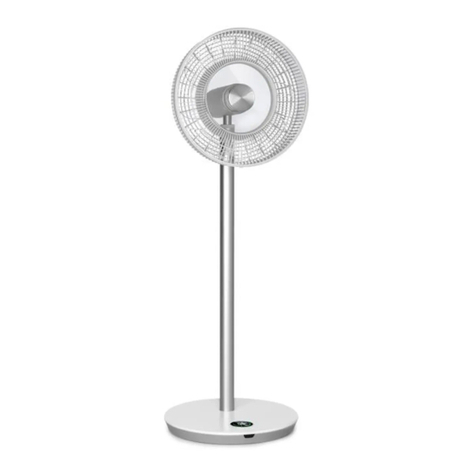
Klarstein
Klarstein Whisperwind Wireless manual
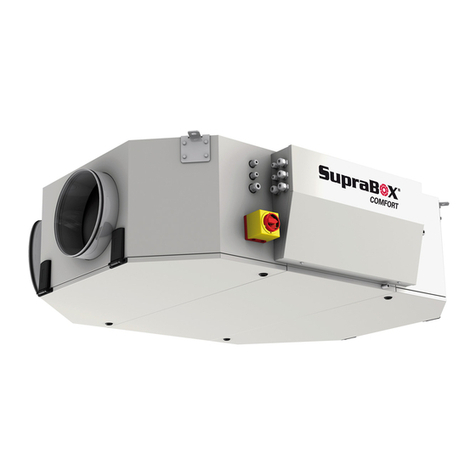
Rosenberg
Rosenberg SupraBox 1900D Operating instruction
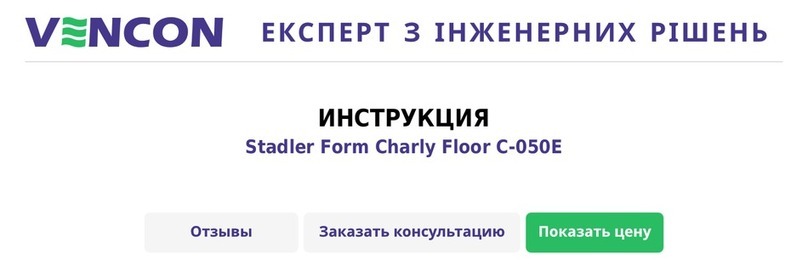
Stadler Form
Stadler Form Charly Floor C-050E operating instructions

BRAYER
BRAYER BR4958BK instruction manual
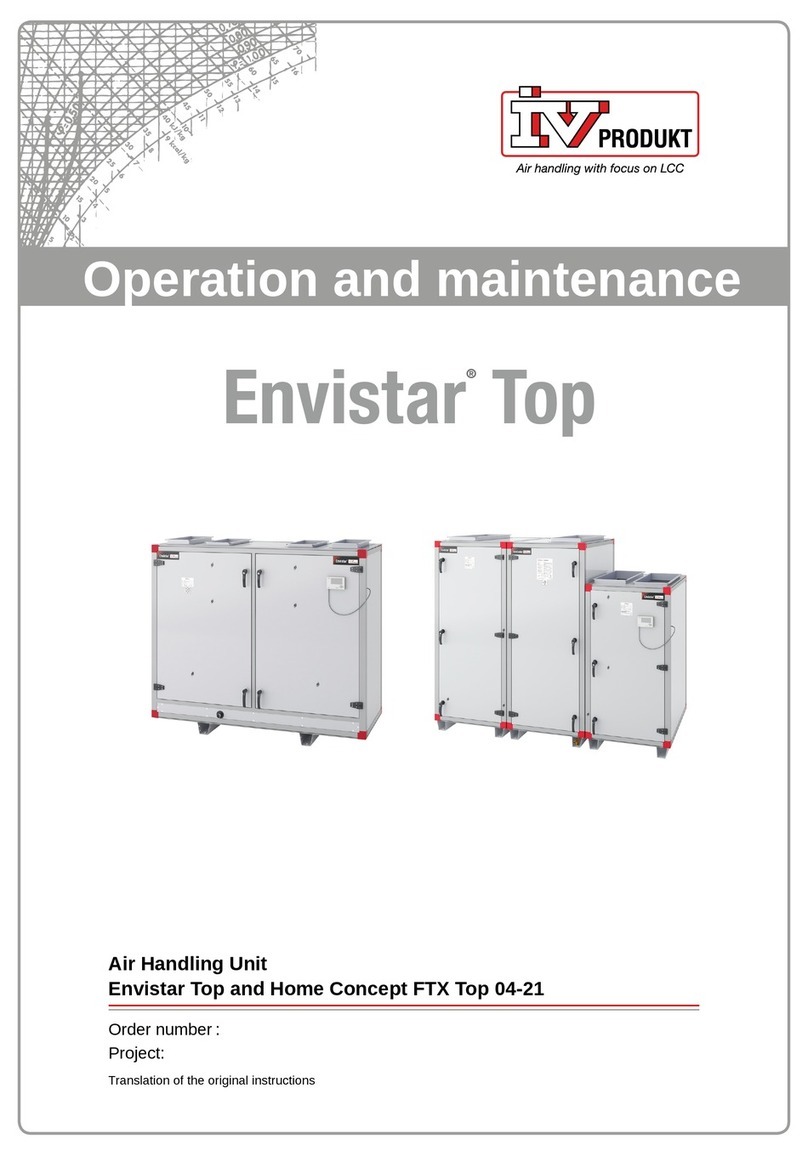
IV Produkt
IV Produkt Envistar Top Series Operation and maintenance
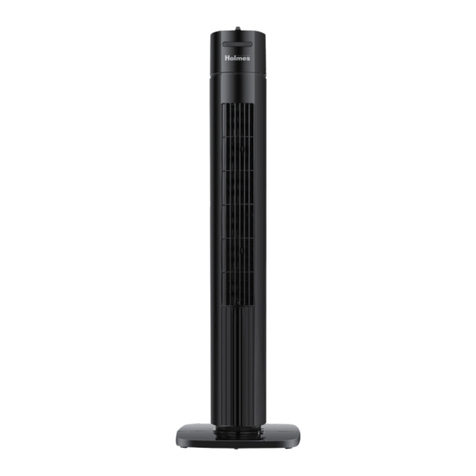
Holmes
Holmes 32510018 instruction manual


